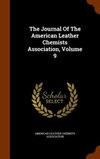东方Trema Orientalis提取物茎皮:皮革工业环保鞣剂的潜在来源
IF 0.5
4区 工程技术
Q4 CHEMISTRY, APPLIED
Journal of The American Leather Chemists Association
Pub Date : 2022-01-03
DOI:10.34314/jalca.v117i1.4696
引用次数: 1
摘要
由于皮革鞣制过程中常用铬的不良影响,世界各国一直在努力开发环保型鞣制剂。因此,鞣制的最新趋势是朝着无铬和更环保的化学加工选择。植物鞣因其对环境的污染较小而成为一种开放的皮革加工技术。考虑到商业化单宁的不足和高成本,从当地可获得的植物中开发替代单宁及其特性是重要的。在不同温度下,采用添加或不添加添加剂(氢氧化钠或亚硫酸钠)的水溶剂对东方Trema Orientalis (L.)茎皮进行提取,得到富含酚类物质的提取物。为了确定作为植物鞣剂的适宜性,获得的提取物随后在产率、总酚含量、单宁含量和分子结构方面进行了表征。随着温度的升高,各提取物的提取率提高,质量基本保持不变。化学添加剂浓度的提高提高了提取物的提取率,但降低了提取物的质量。从提取率和提取率两方面确定了最佳提取条件:80℃,水溶剂。该水提取物的酚类和单宁含量分别为干提取物的266.13 mg没食子酸当量/ gm和30.12%。最终提取物表现出优异的皮革再鞣制倾向,可与商业鞣质相媲美。本文章由计算机程序翻译,如有差异,请以英文原文为准。
Extract of Trema Orientalis (L.) Stem Bark: A Potential Source of Environmentally Friendly Tanning Agent for Leather Industry
Researchers around the world are in continuous endeavor to develop environment friendly tanning agent due to adverse effect of conventionally used chromium during leather tanning. Recent trend of tanning is thus heading to chrome-free and greener chemical processing options. Vegetable tanning is an exoteric leather processing technique because of their lower pollution load on the environment. Considering the inadequacy and high costing for the commercialized tannins, development of alternative tannins from locally available plants and their characterizations are important. In this research, the stem barks of Trema Orientalis (L.) were extracted at different temperatures employing water solvent with or without additives (sodium hydroxide or sodium sulphite) to attain phenolic-rich extractives. To ascertain appropriateness as a vegetable tanning agent, the obtained extracts were thereafter characterized in respect to yield, total phenolic content, tannin content and molecular structure. The extraction yield for all extracts improves and the quality remains nearly unchanged with temperature rising. The elevated concentration of chemical additives enhances the extraction yield but lessens the quality of extracts. In terms of extraction yield and the quality of extracts the best condition for extraction was discerned at 80°C with water solvent. This water extract has a decent extent of phenolic and tannin content of 266.13 mg Gallic acid equivalent/ gm of dry extract and 30.12 % respectively. The final extract exhibits excellent leather retanning tendency comparable to the commercial quebracho tannins.
求助全文
通过发布文献求助,成功后即可免费获取论文全文。
去求助
来源期刊

Journal of The American Leather Chemists Association
工程技术-材料科学:纺织
CiteScore
1.30
自引率
33.30%
发文量
29
审稿时长
3 months
期刊介绍:
The Journal of the American Leather Chemists Association publishes manuscripts on all aspects of leather science, engineering, technology, and economics, and will consider related subjects that address concerns of the industry. Examples: hide/skin quality or utilization, leather production methods/equipment, tanning materials/leather chemicals, new and improved leathers, collagen studies, leather by-products, impacts of changes in leather products industries, process efficiency, sustainability, regulatory, safety, environmental, tannery waste management and industry economics.
 求助内容:
求助内容: 应助结果提醒方式:
应助结果提醒方式:


